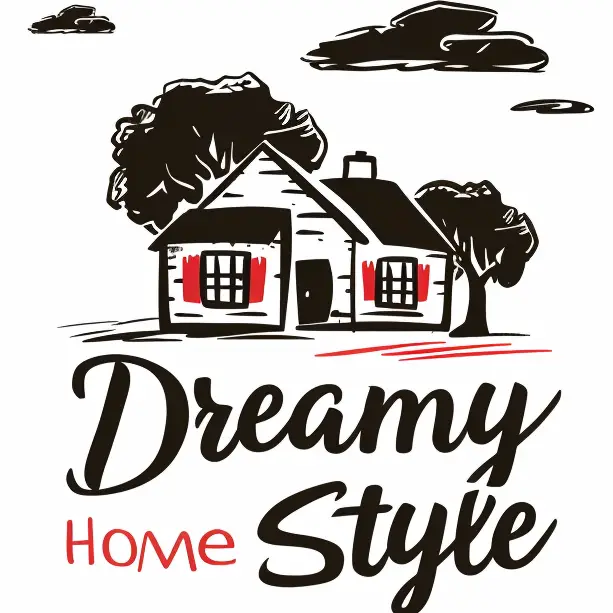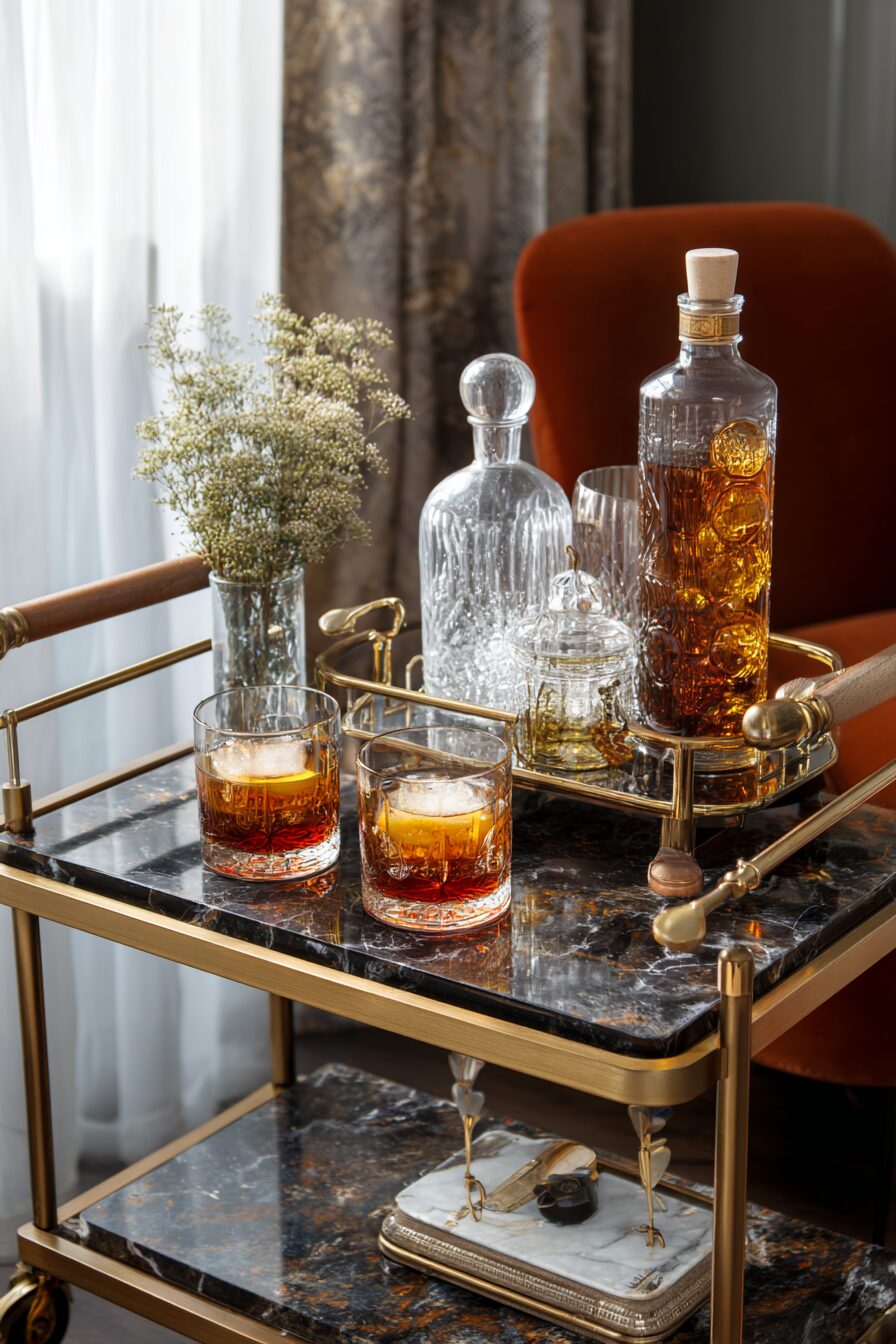Creating a cozy jazz bar aesthetic isn’t just about throwing up some dim lights and calling it a day.
It’s about crafting an atmosphere that makes people want to settle in with a whiskey neat and lose themselves in the smooth sounds of Miles Davis.
If you’re designing your home bar, basement hangout, or actual commercial space, these ten essential elements will help you nail that perfect jazz club vibe that keeps people coming back for more.
Embrace the Magic of Moody Lighting

Nothing screams amateur hour like harsh overhead lighting flooding your jazz space.
The secret to authentic jazz bar ambiance lies in creating layers of warm, golden light that dance across faces and cast mysterious shadows in all the right places.
Start with amber-tinted Edison bulbs hanging at different heights throughout your space, creating an uneven canopy of soft illumination.
Table lamps with warm yellow bulbs should become your best friends, positioned strategically on side tables, the bar top, and in cozy corners where conversations happen.
Candles aren’t just decoration – they’re essential mood-setters that add that flickering, intimate glow that makes everyone look like they stepped out of a 1940s film noir.
String up some vintage-style light bulbs along walls or ceilings, but keep them dimmed to about 30% brightness to maintain that sultry atmosphere.
Floor lamps with fabric shades work wonders for creating pools of light that draw people into specific seating areas.
Avoid any light sources that cast blue or white tones, as these kill the warm, inviting feeling you’re trying to create.
The goal is to make your space feel like it exists in perpetual golden hour, where time slows down and worries melt away.
Remember that good jazz lighting should make people feel comfortable enough to stay for hours, not squint or strain their eyes.
Madison’s Current Obsessions
Whiskey Lounge Decor Ideas So Stylish, You’ll Want To Show Off Your Space!Master the Art of Rich, Sophisticated Colors
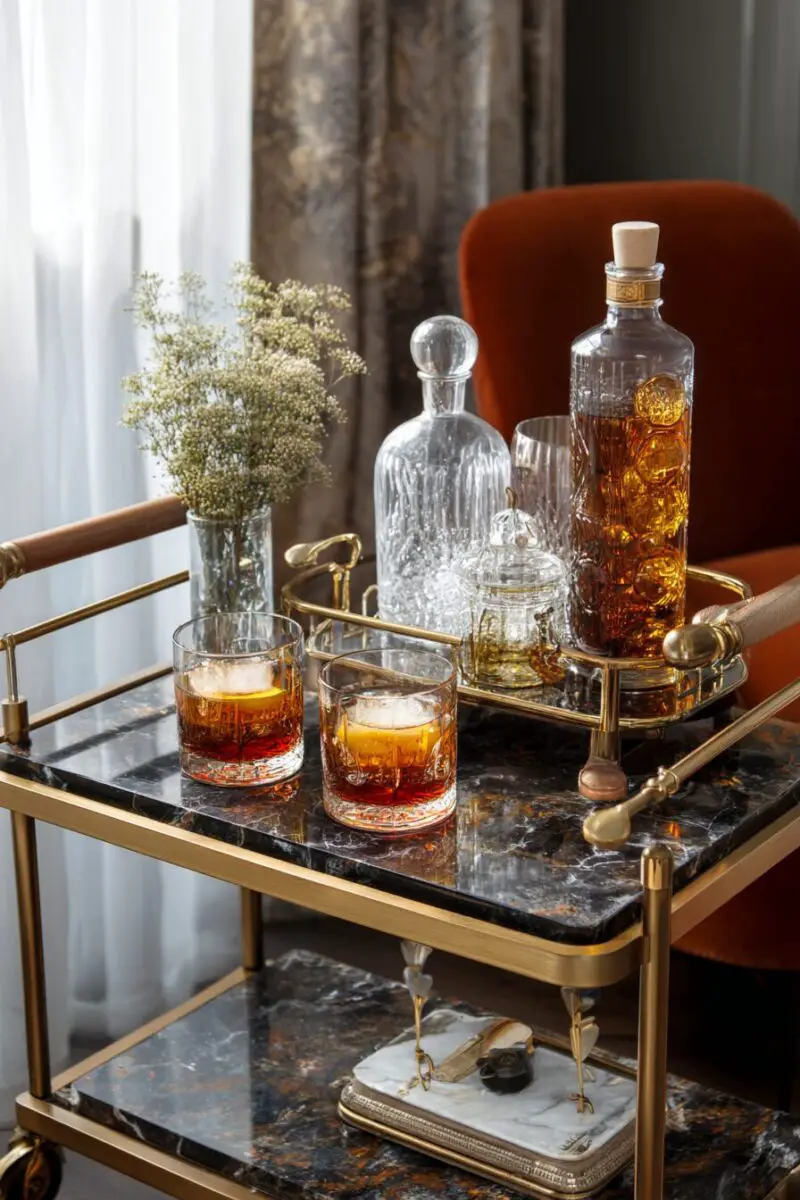
Forget about bright, cheerful colors – jazz bars live in a world of deep, luxurious hues that wrap around you like velvet.
Your color palette should revolve around deep burgundy, navy blue, forest green, and rich chocolate brown as your primary colors.
These dark, moody tones create the perfect backdrop for intimate conversations and late-night musical sessions.
Add touches of gold, brass, and copper as accent colors to bring warmth and sophistication to the darker base palette.
Paint your walls in deep, saturated colors or use dark wood paneling to create that classic speakeasy feeling.
Burgundy leather or deep blue velvet upholstery on seating creates instant luxury and comfort.
Gold picture frames, brass light fixtures, and copper bar accessories add those essential metallic touches that catch and reflect your warm lighting.
Deep emerald green works beautifully as an accent wall color or in bar stools and throw pillows.
Avoid pastels, bright whites, or any colors that feel too modern or sterile – you’re going for timeless elegance, not contemporary chic.
The richness of these colors should make people feel like they’ve stepped into an exclusive, intimate world where sophistication reigns supreme.
Design Your Dream Room in Minutes! By DreamyHomeStyle
🏡 Start Creating FREE →Madison’s Current Obsessions
These Home Lounge Room Bar Ideas Are A Must-See!Curate Authentic Vintage Furniture and Decor
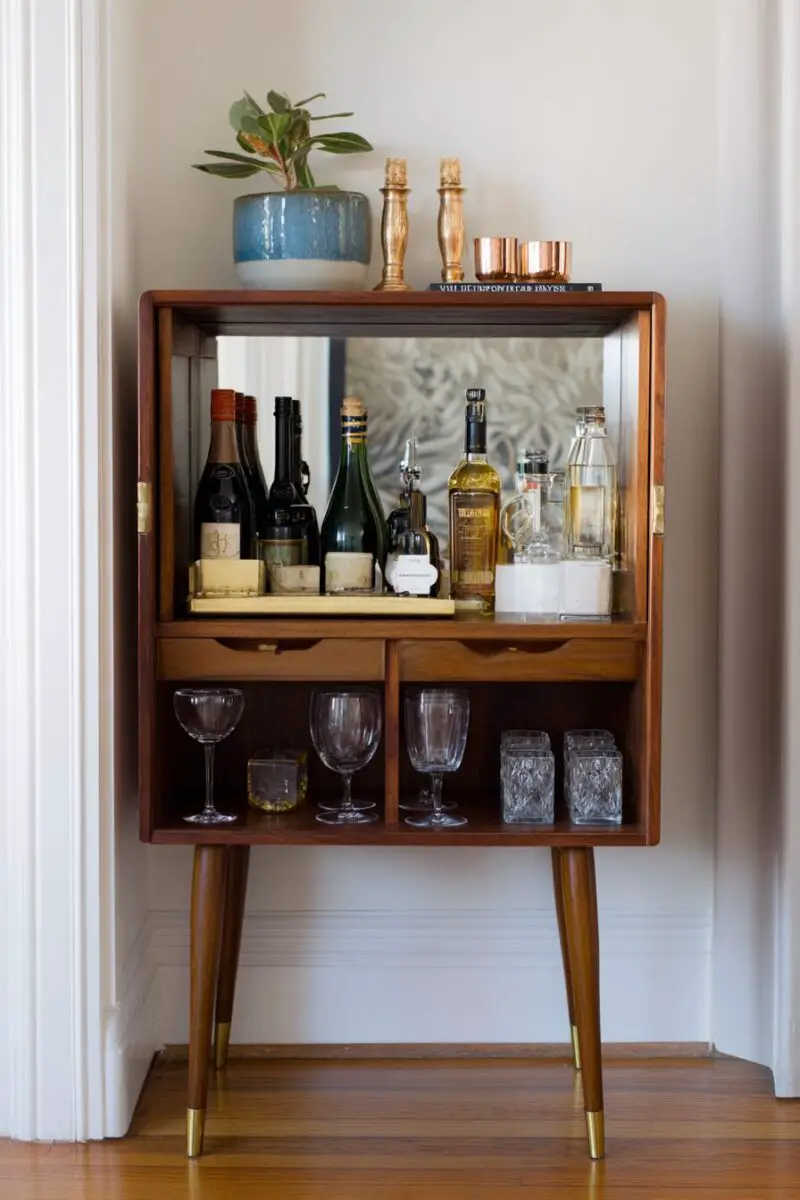
Your furniture choices can make or break the authentic jazz bar atmosphere you’re trying to create.
Hunt down genuine vintage pieces from the 1920s through 1950s, or find high-quality reproductions that capture the same spirit and craftsmanship.
Leather club chairs with worn patina and brass nail head trim should anchor your seating areas, providing comfortable spots for serious listening sessions.
Round cocktail tables with pedestal bases work better than square or rectangular options, as they encourage more intimate conversations.
Vintage bar stools with backs and swivel mechanisms add both comfort and authenticity to your bar area.
Antique side tables, preferably with marble or wood tops, provide surfaces for drinks and ashtrays while adding to the overall aesthetic.
Look for pieces with curved lines, rich wood finishes, and quality construction that will last for decades.
Avoid anything that looks too new, plastic, or mass-produced – every piece should tell a story and have character.
Estate sales, antique shops, and vintage furniture dealers are your best sources for finding authentic pieces that fit your vision.
The goal is to create a space that feels like it has existed for decades, where every piece of furniture has witnessed countless musical performances and late-night conversations.
Madison’s Current Obsessions
Turn Your Closet Into a Coffee BarCreate Textural Interest with Exposed Elements
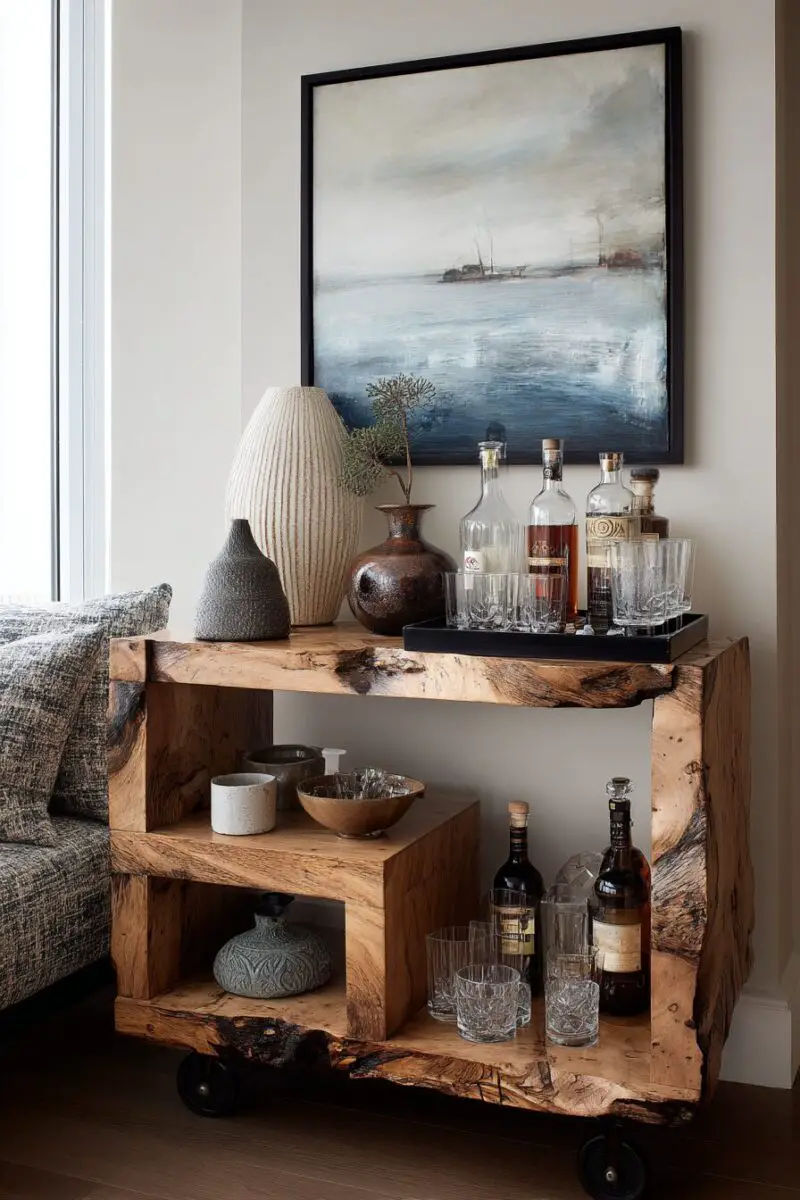
Smooth, perfect walls have no place in an authentic jazz bar – you need texture and character that speaks to the genre’s gritty, soulful roots.
Exposed brick walls instantly add warmth, texture, and that essential urban edge that jazz music was born from.
If you don’t have existing brick, you can install brick veneer or use textured wallpaper that mimics the look and feel of aged brick.
Exposed wooden beams on ceilings create visual interest and add to the vintage industrial aesthetic that many classic jazz clubs embraced.
Textured plaster walls with subtle imperfections and aged patina work beautifully as accent walls behind seating areas.
Stone or tile backsplashes behind the bar add both functionality and visual texture that catches and reflects your warm lighting.
Metal elements like corrugated tin panels or aged copper sheets can add industrial touches when used sparingly as accent features.
The key is balancing these rough, textural elements with softer furnishings to create a space that feels both edgy and comfortable.
These imperfect, weathered surfaces help tell the story of jazz music itself – raw, authentic, and full of character that only comes with time and experience.
Madison’s Current Obsessions
Unique Built-In Bar Designs For Your Living RoomInvest in Premium Audio Equipment and Vinyl Collection
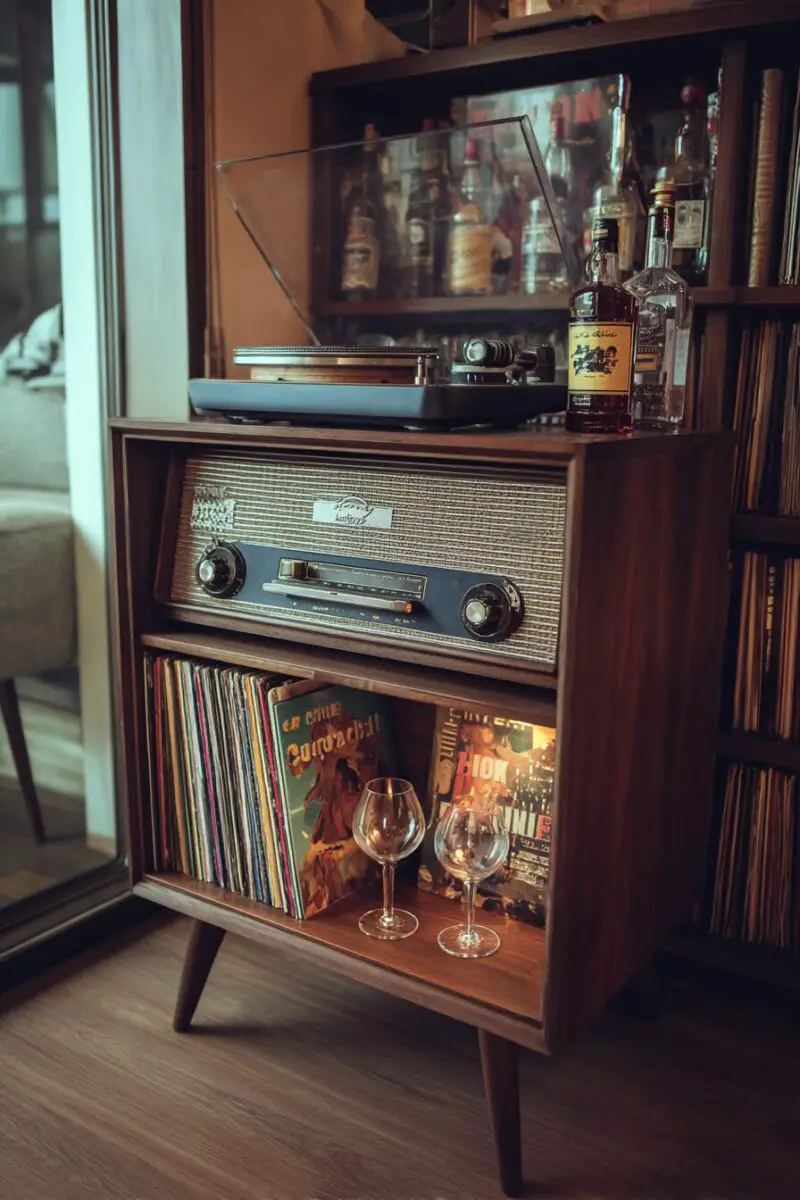
The heart of any jazz bar is the music, and mediocre sound quality will destroy the entire atmosphere you’ve worked so hard to create.
Invest in a high-quality stereo system with speakers that can handle the full range of jazz instrumentation, from deep bass lines to crisp cymbal crashes.
Vintage-style speakers or modern speakers housed in wood cabinets blend seamlessly with your aesthetic while delivering exceptional sound quality.
Build a curated collection of vinyl records featuring jazz legends like John Coltrane, Ella Fitzgerald, Duke Ellington, and Billie Holiday.
Display your vinyl collection prominently on wall-mounted shelves or in vintage record cabinets that become part of the decor.
A quality turntable, preferably with a vintage aesthetic, should be positioned where it’s visible but protected from spills and accidents.
Set up different zones with varying volume levels – intimate conversation areas should have softer background music, while the main listening area can handle fuller volume.
Include a mix of classic jazz standards, bebop, smooth jazz, and blues to create variety throughout the evening.
The music should never overpower conversations but should be present enough to set the mood and fill comfortable silences.
Remember that the goal is to create an auditory backdrop that enhances the overall experience without becoming the dominant focus of attention.
Madison’s Current Obsessions
Transform Your Home With Unique Bar Nook IdeasDesign Intimate Seating Arrangements That Encourage Connection
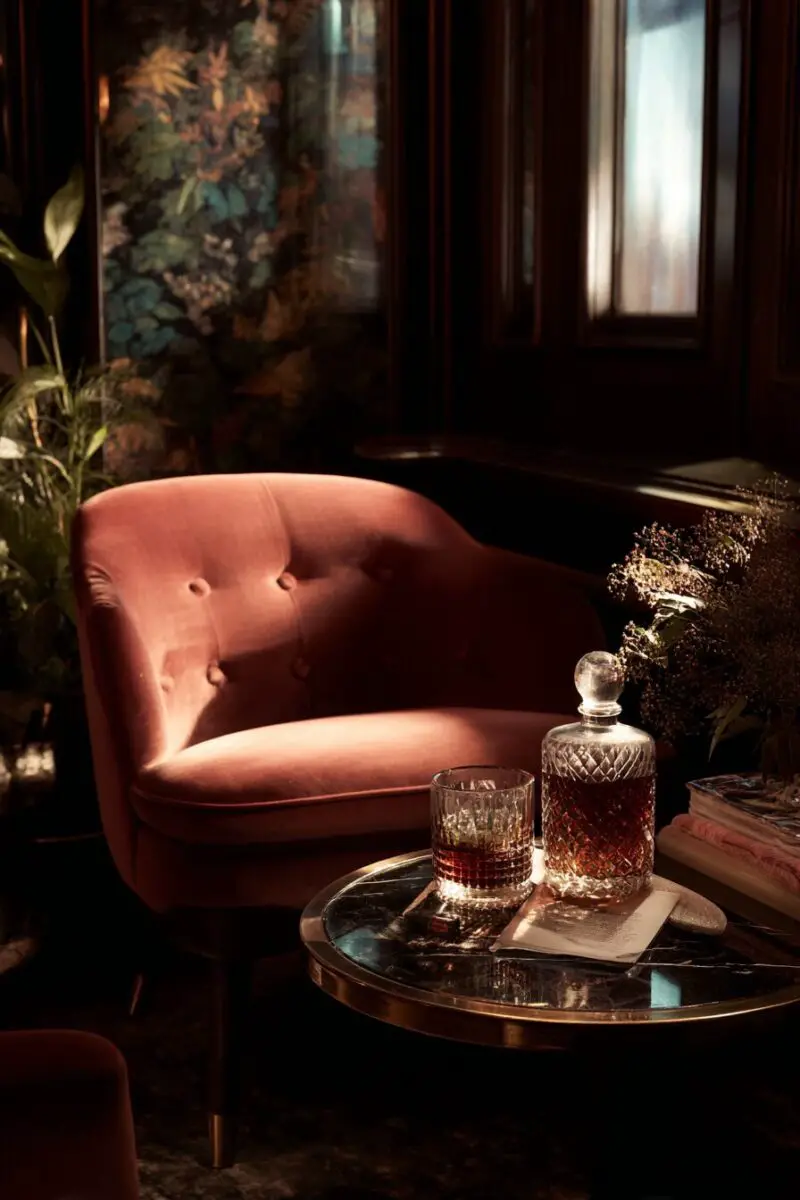
Forget about maximizing capacity – jazz bars are all about creating intimate spaces where meaningful connections happen naturally.
Arrange seating in small clusters of two to four people maximum, using furniture placement to create semi-private conversation nooks.
Position chairs and small sofas at slight angles to each other rather than in straight lines, encouraging face-to-face interaction.
Create cozy corner areas with a loveseat or two armchairs flanking a small side table, perfect for couples or close friends.
Use area rugs to define separate seating zones and add warmth underfoot, helping to absorb sound and create visual boundaries.
Ensure there’s enough space between seating groups for privacy but not so much that the room feels empty or disconnected.
Add small side tables within easy reach of every seat for drinks, ashtrays, and personal items.
Banquette seating along walls works well for slightly larger groups while maintaining the intimate feel through lower backs and plush cushioning.
Avoid long, straight lines of seating or formal arrangements that feel more like waiting rooms than social spaces.
The goal is to make every seat feel like the best seat in the house, with clear sightlines to the bar and easy access to conversations.
Madison’s Current Obsessions
Must-See Basement Bar Ideas You’ll LoveBuild an Authentic Bar Setup with Classic Elements
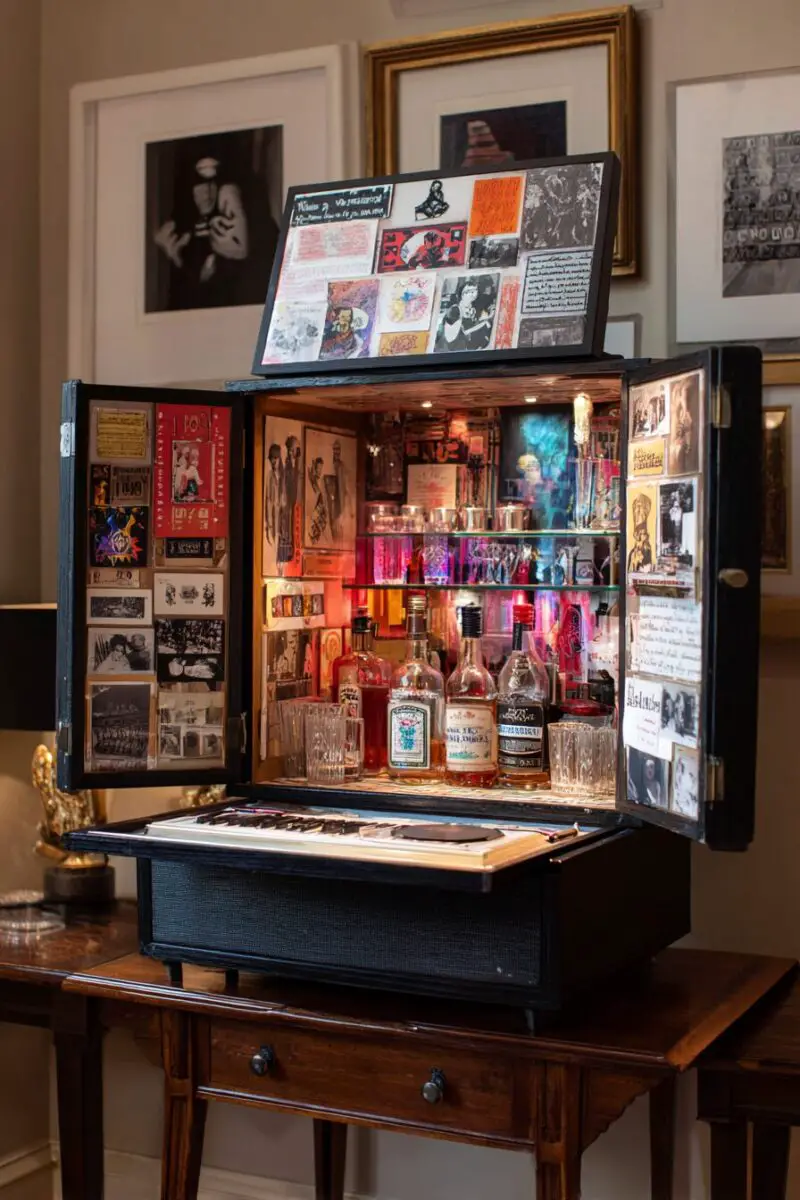
Your bar area serves as the focal point and should embody everything sophisticated about classic cocktail culture.
Install a solid wood bar top, preferably in rich mahogany or walnut, with enough depth to accommodate proper bartending and comfortable leaning.
Add a brass foot rail along the base of the bar for comfort and authentic period detail that guests will appreciate during longer conversations.
Stock your bar with classic glassware including rocks glasses, martini glasses, coupe glasses, and highball glasses in quality crystal or glass.
Display premium spirits on floating shelves or in a vintage bar cart, focusing on whiskeys, gins, and rums that were popular during jazz’s golden age.
Invest in classic bar tools including a quality cocktail shaker, jigger, muddler, and strainer in brass or copper finishes.
Add a vintage cash register or decorative till as a conversation piece and functional element that enhances the authentic atmosphere.
Include bar stools with backs and swivel mechanisms positioned at proper spacing to allow comfortable conversation between patrons.
Behind-bar mirrors with ornate frames help reflect light throughout the space and create the illusion of a larger, more dynamic environment.
The bar should feel like a stage where cocktail artistry happens, drawing people in and encouraging them to linger over carefully crafted drinks.
Showcase Jazz History Through Memorabilia and Artwork
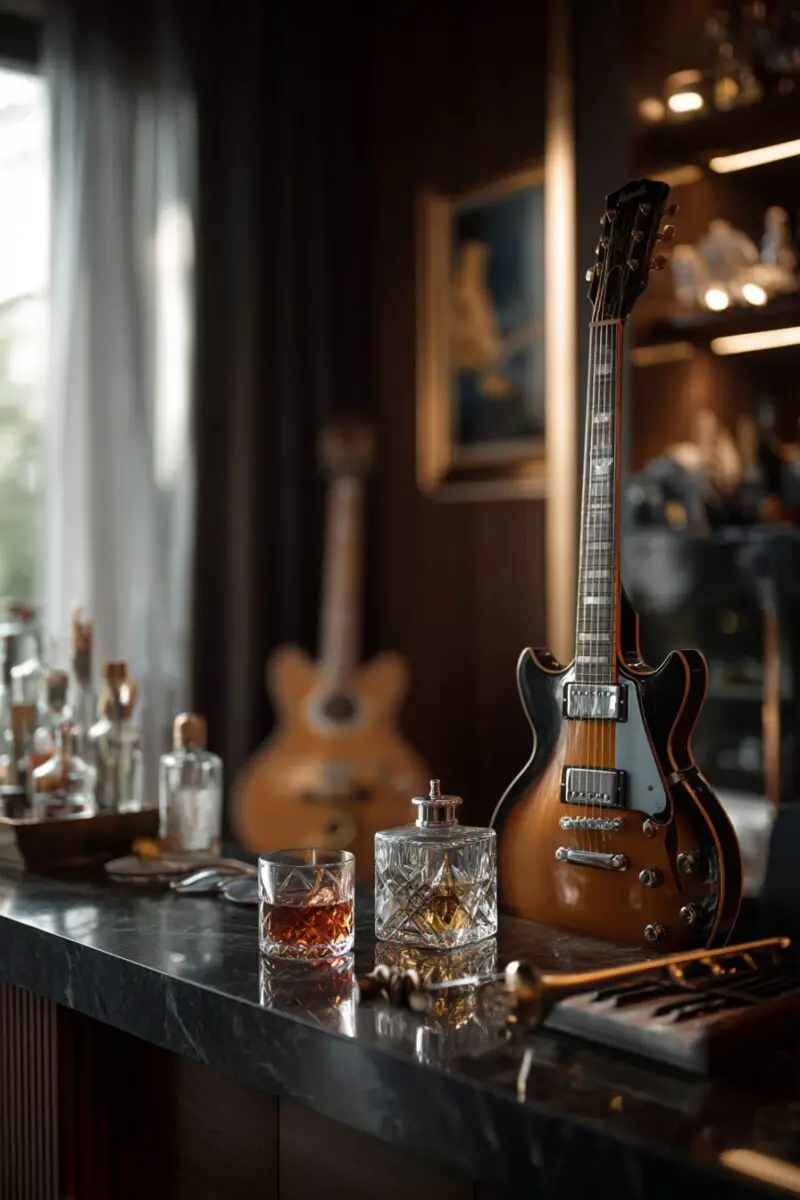
Transform your walls into a celebration of jazz history that educates and inspires everyone who enters your space.
Hang framed photographs of jazz legends in black and white, focusing on candid performance shots that capture the emotion and energy of live music.
Display vintage concert posters, album covers, and promotional materials from famous jazz clubs and festivals throughout history.
Add shadowboxes containing authentic memorabilia like old trumpet mouthpieces, drumsticks, or sheet music from famous compositions.
Include artwork that captures the spirit of jazz – abstract pieces in your color palette or figurative works depicting musicians in performance.
Vintage neon signs advertising jazz clubs or famous musicians add both lighting and authentic period atmosphere to your walls.
Create a gallery wall featuring a mix of photographs, artwork, and memorabilia arranged in an organic, salon-style hanging.
Include informational plaques or small cards that tell the stories behind significant pieces, turning your space into an informal jazz museum.
Rotate displays periodically to keep the space fresh and give returning guests something new to discover during each visit.
The goal is to surround people with the rich history and culture of jazz, making them feel connected to the legendary musicians and venues that shaped this incredible art form.
Layer in Luxurious Textures and Fabrics
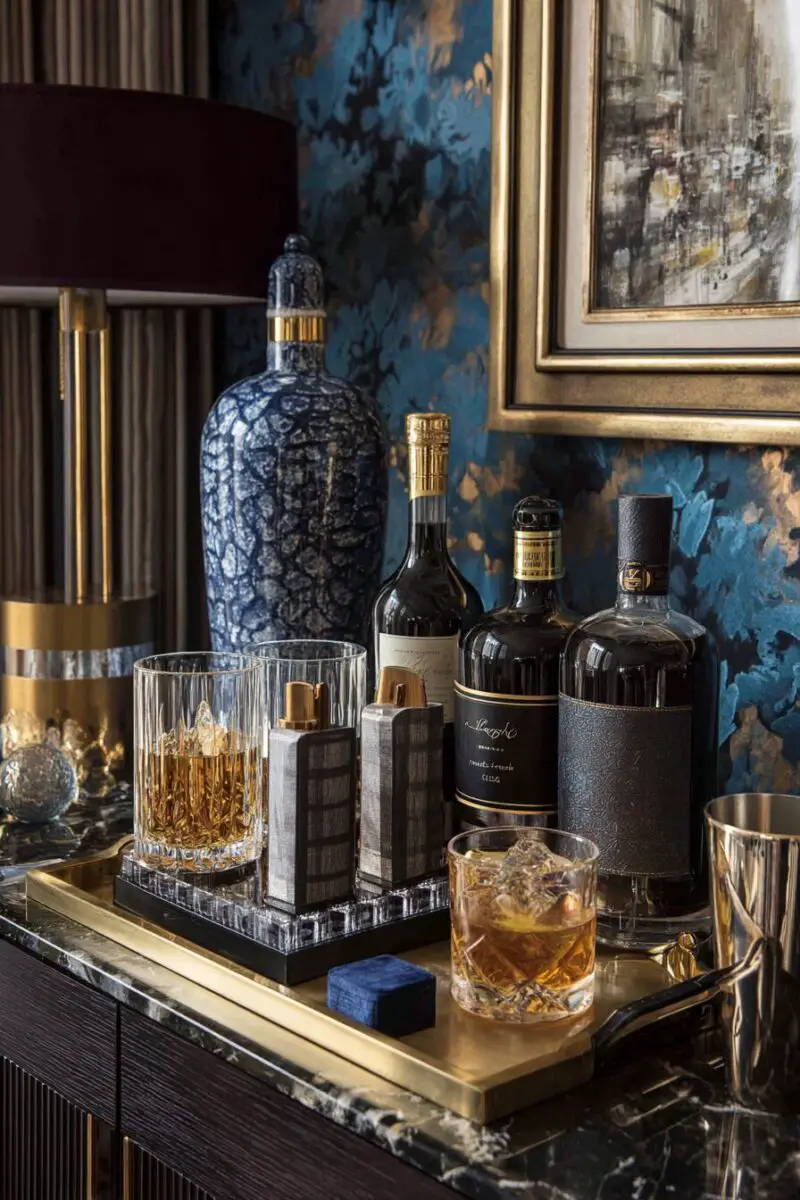
The tactile experience of your jazz bar should feel as rich and sophisticated as the music itself sounds.
Incorporate velvet upholstery on chairs, banquettes, and throw pillows in deep jewel tones that complement your color palette.
Add leather elements through seating, bar stools, and accessories, choosing pieces with natural aging and patina rather than overly pristine finishes.
Drape windows with heavy curtains in rich fabrics like velvet or thick cotton, helping to absorb sound and create intimacy.
Layer Persian or Oriental rugs throughout the space, choosing patterns and colors that enhance rather than compete with your overall design.
Include throw blankets in cashmere, wool, or faux fur draped over seating areas for both comfort and visual texture.
Add fabric lampshades on table lamps and floor lamps to soften light and introduce more textile elements into the space.
Incorporate wood elements with rich grain patterns and deep stains that add natural texture to walls, furniture, and architectural details.
Use textured wallpaper sparingly as accent walls, choosing patterns that suggest aged plaster, fabric weaves, or subtle geometric designs.
These varied textures create visual and tactile interest that makes people want to touch surfaces and settle in comfortably for extended periods.
Living Plants Minibar
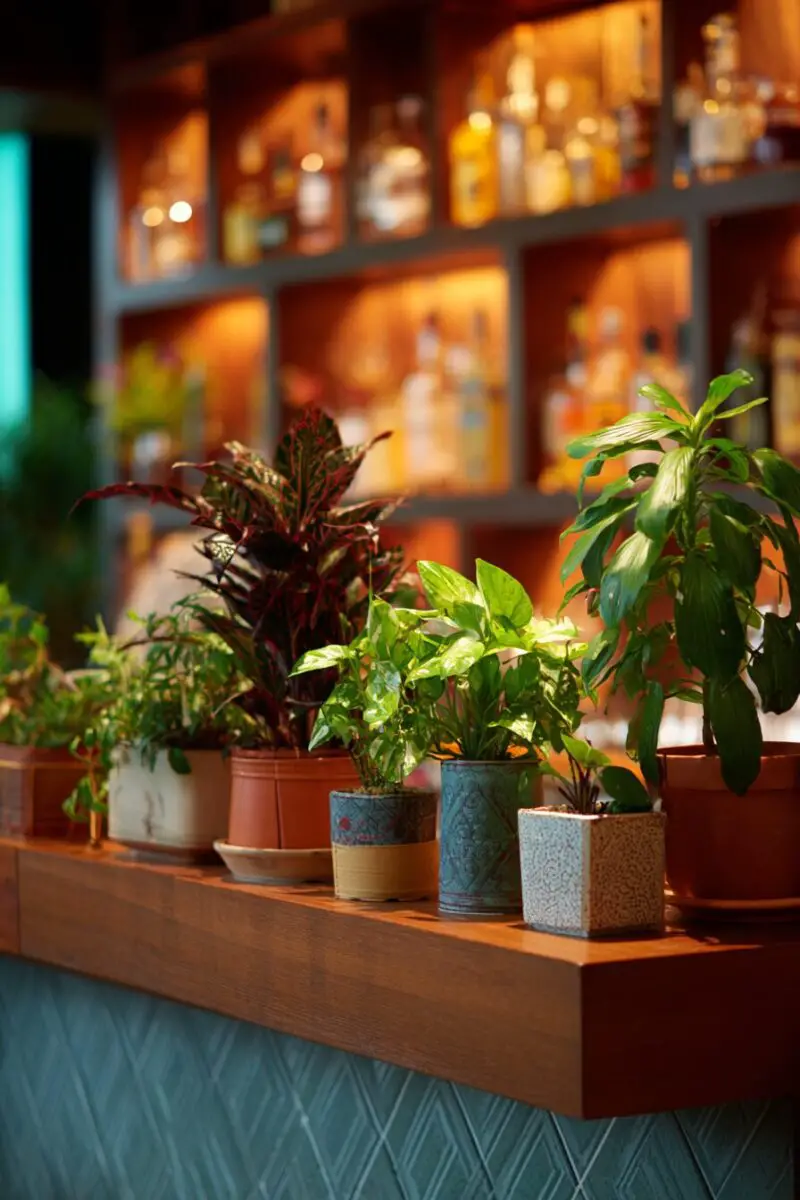
Living plants add the perfect organic element to balance all the rich, heavy materials in your jazz bar aesthetic.
Choose low-light plants like pothos, snake plants, or peace lilies that thrive in the dimmer lighting conditions you’ve created.
Use vintage brass or copper planters that complement your metallic accents while adding natural elements to hard surfaces.
Position larger plants in corners or next to seating areas where they can provide natural visual barriers and soften harsh angles.
Hanging plants in macrame holders or vintage-style hanging planters add vertical interest and help define different zones.
Small succulents or air plants in unique containers work well as table centerpieces that don’t obstruct conversation or views.
Choose plants with deep green foliage that complements your rich color palette rather than competing with it through bright flowers or variegated leaves.
Group plants in odd numbers and varying heights to create natural, organic arrangements that feel intentional but not overly designed.
The goal is to bring just enough life and freshness into the space to prevent it from feeling too heavy or closed-in while maintaining the intimate, cozy atmosphere you’ve worked to create.
Creating an authentic jazz bar aesthetic requires attention to every detail, from the warmth of your lighting to the texture of your fabrics.
When you combine these ten elements thoughtfully, you’ll create a space that doesn’t just look like a jazz bar – it feels like one.
Your friends and guests will find themselves naturally speaking in lower tones, lingering over their drinks, and losing track of time as they get swept up in the sophisticated atmosphere you’ve created.
The magic happens when all these elements work together to transport people to a different era, where good music, great drinks, and meaningful conversations were the only things that mattered.
